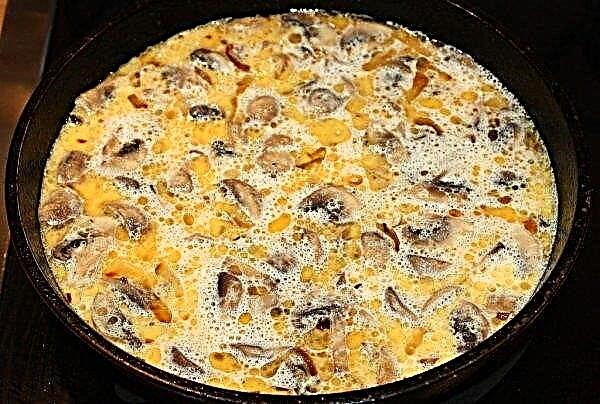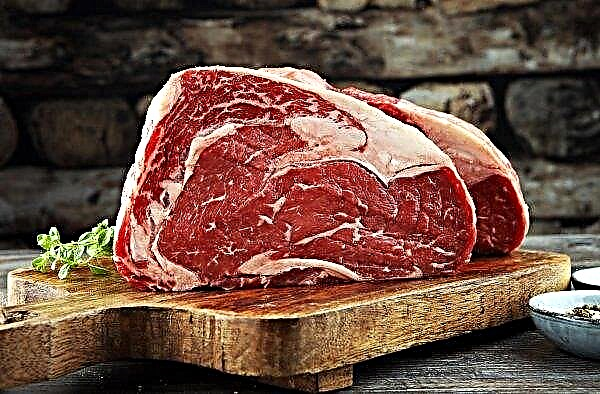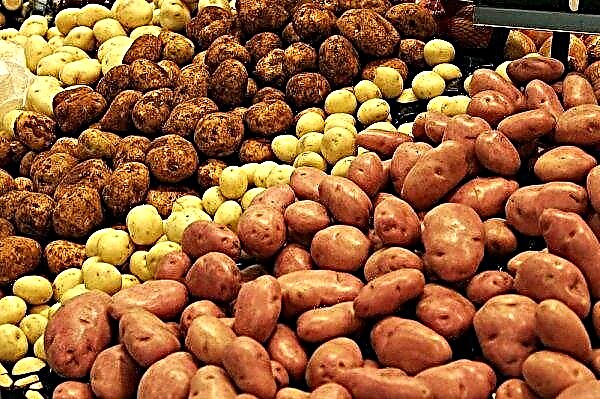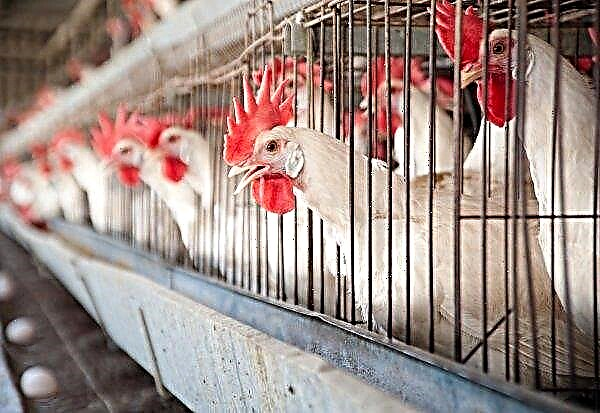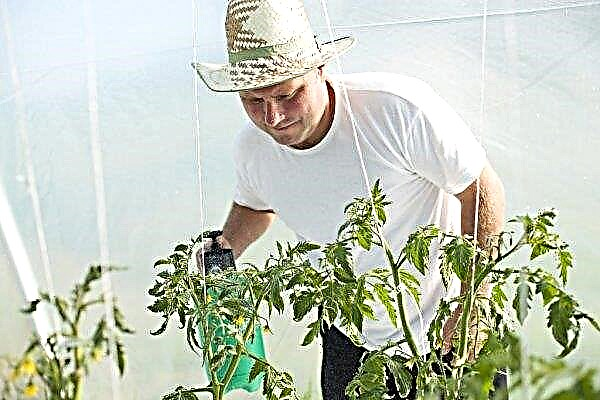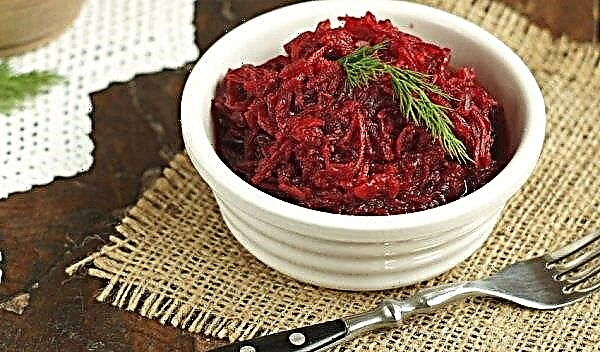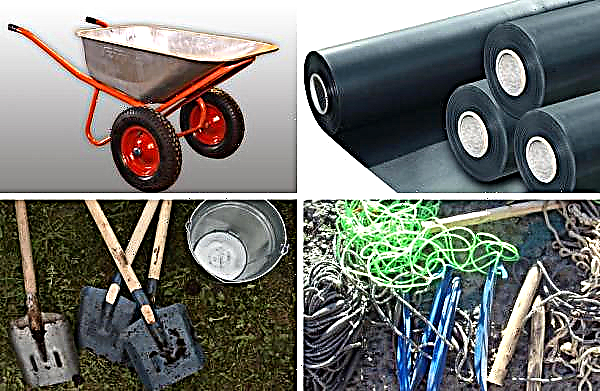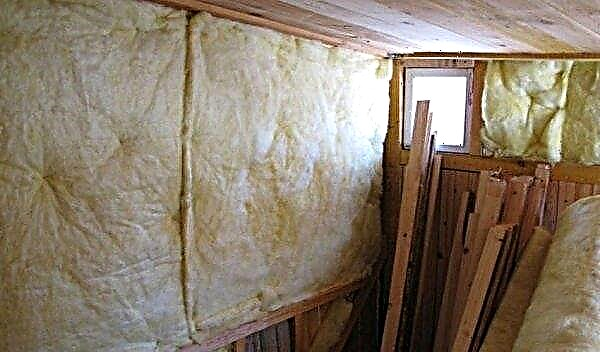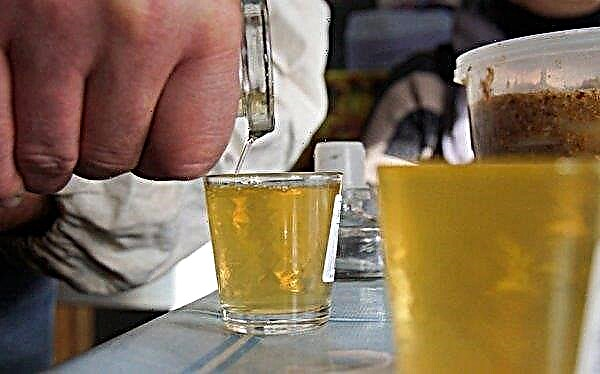Potato varieties of European selection have long been in demand in our latitudes. One of the tested and approved for growing popular varieties is Elmundo potatoes.
History of the variety
In 2013, the variety was entered into the register of the FSBI State Commission as approved for cultivation in farms and private farms of the Russian Federation. According to information from the register, the company applying for it is Stet Holland, the Netherlands, author of the variety Peter Oldenkamp.
Did you know? Scientists at the Hebrew University of Jerusalem built boiled potatoes to produce energy using boiled potatoes.
The company is one of the leading experts in the production of seed potatoes for the countries of Europe, Asia, America. In Russia, the variety is recommended for cultivation in the Central and Central Black Earth region, in the North Caucasus, the Middle Volga region and in the North-West region.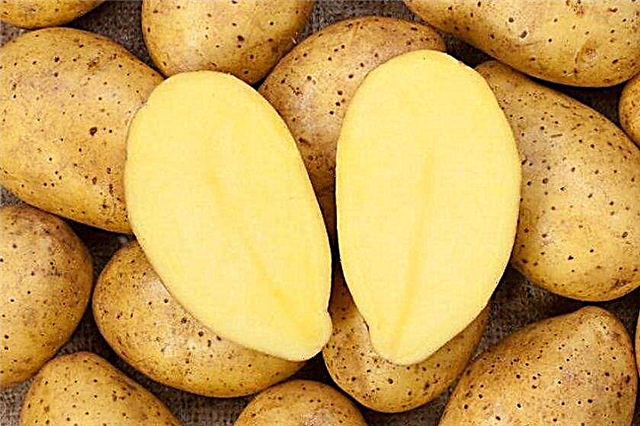
Botanical Description
Elmundo has an attractive trade dress. According to reviews, the potato keeps its shape during heat treatment, ideal for frying, including deep-fried.
Tuber
The shape of the tuber is round-oval, the surface is smooth with small eyes. The peel is thin, but dense, not injured during transportation. The skin color is light yellow, the same for the pulp.
The taste of potatoes is saturated, the flesh is moderately watery, does not darken at the cut, the starch content is up to 13.6%. Tuber weight 105–135 g.
Kustov
As it grows, a straight, medium-sized bush forms, about 70 cm. The tops are leafy, medium-sized leaves with a serrated edge, light green. During flowering, small flowers of a pale purple hue bloom on a direct peduncle.
Grade characteristics
Elmundo is popular among farmers for its unpretentiousness in cultivation. The culture is not demanding on soils, moderately resistant to drought, in addition, the variety is perfectly stored.
Disease resistance
On a five-point scale, the resistance of the variety to the main diseases and pests of the crop is estimated as follows:
- potato cancer, nematode - 5 points;
- late blight, mosaic, soil pests - 4 points.
Ripening dates and productivity
The first harvest of young potatoes can be harvested 45 days after the appearance of full seedlings. A bush with a branched root system forms an average of 15–20 potatoes.
The yield of a variety, depending on the fertility of the soil, ranges from 245–345 kg / ha. The output of marketable products is up to 98%.
Pros and cons of the variety
- Among the main advantages of the variety are the following:
- ability to stably bear fruit on any type of soil;
- high productivity;
- marketable condition;
- resistance to most diseases, to insects;
- great taste;
- lack of stickiness during cooking;
- fast ripening period;
- good preservation of tubers.
For some consumers, the downside is Elmundo’s inability to digest, making it unsuitable for mashed potatoes.
Agricultural technology planting potatoes
Compliance with the rules of agricultural technology is the key to a high-quality crop, it is especially important to take into account the nuances of crop rotation of garden crops.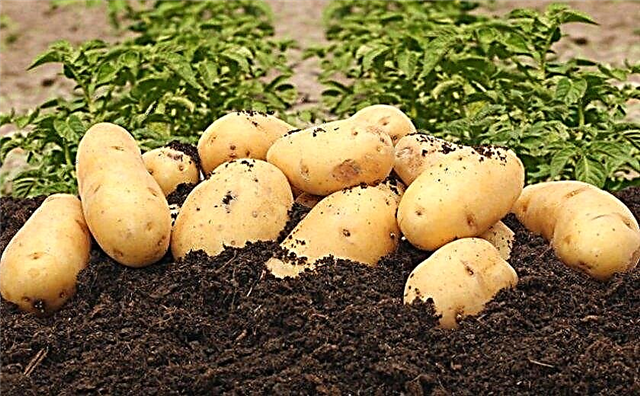
Optimal timing
The exact timing of planting vegetables is problematic to name in connection with constantly changing climatic conditions, in addition, they differ for each region:
- North Caucasian - beginning of April;
- Central, Central Black Earth, Volga Region - beginning of May;
- Northwestern - mid-May;
- Southern areas - end of April.
A more accurate method for determining the date is the temperature of the air and soil.
Ideal conditions for potatoes:
- soil temperature (to a depth of 10 cm) - + 6 ... + 8 ° C;
- air temperature - during the day +13 ... + 16 ° С, at night - not lower than + 5 ° С.
Seat selection
Any type of soil is suitable for this variety; low acidity and friability are a requirement. In heavy soil, the growth of stolons and roots will be difficult.
The site should be illuminated most of the day, otherwise the tops will be pulled out in search of lighting, which will lead to the grinding of tubers. It is advisable to protect the site from the wind in the direction of the north and north-west, drafts are a threat to the normal development of the plant.
The landing area should be flat or on a small slope where moisture does not accumulate. The distance of groundwater from the earth's surface is at least 1.5 m. According to crop rotation rules, sowing potatoes in one place for more than two years is impossible. Depleted land will produce poor crops.
According to crop rotation rules, sowing potatoes in one place for more than two years is impossible. Depleted land will produce poor crops.
- The best predecessors are:
- roots;
- White cabbage;
- early vegetables;
- legumes.
Important! You can not plant potatoes after other solanaceous, as they are susceptible to one disease.
Soil preparation
The fertile soil is dug up and cleaned of plant residues, introducing 4 kg / m² of humus. Heavy soil is further loosened, applying 1-2 kg / m² of peat and coarse sand. The acidic soil is calcified by adding 150 g of wood ash per m².
Landing pattern
The bed is formed in rows with a distance of 70–80 cm. Between the holes leave up to 35 cm, and the planting depth is not more than 10 cm. When laying the seed, it is turned with its eyes up.
Planting Care Features
Potato beds care procedures include watering, fertilizing and soil care.
Watering
The first time after planting, watering is not carried out so as not to harm the process of forming the root system. As soon as the first sprouts appear, the soil is moderately moistened. Water should correspond to air temperature, be settled.
The best time of the day for planting irrigation is considered morning or evening, when the sun is not too active and the moisture does not evaporate so quickly.
Important! Watering is carried out soil, moisture should not fall on the foliage. Phytophthora develops on moist tops.
Watering is important during and after flowering. The need for moisture is checked by the condition of the soil to a depth of 15 cm. Another indicator is the lower leaves of the tops, if they began to turn yellow, meaning the plant does not have enough moisture.
Top dressing
Potatoes do not like an excess of fertilizers, so the procedure is carried out only 3 times per season. The method of application is radical. The first procedure is needed to form a strong tops, when the seedlings are already about 10 cm tall.
Humus is used, introducing 1.5 cups into the soil under each bush.
The second feeding is needed during the laying of flower buds. Use wood ash making in the soil for 2 tbsp. l under the bush.
For the third time, plants are fed after the bushes bloom using superphosphate. It is more appropriate to apply the method of making a sheet, 100 g / 10 l of water. Spraying will more effectively affect the growth of tubers and their taste.
Weeding and loosening the soil
Weeds begin to grow even before the germination of potato sprouts. Parasitic herbs deprive the culture of a large part of the nutrients, inhibit the root system and create a favorable environment for the development of fungi.
Weeding is carried out regularly. It is equally important to huddle the bushes to protect the stems from drying out and overheating, and the tubers from saturation with solanine.
Loosening of the soil is carried out after each irrigation and rainfall. The crust on the surface of the soil will prevent the penetration of air, so it needs to be broken.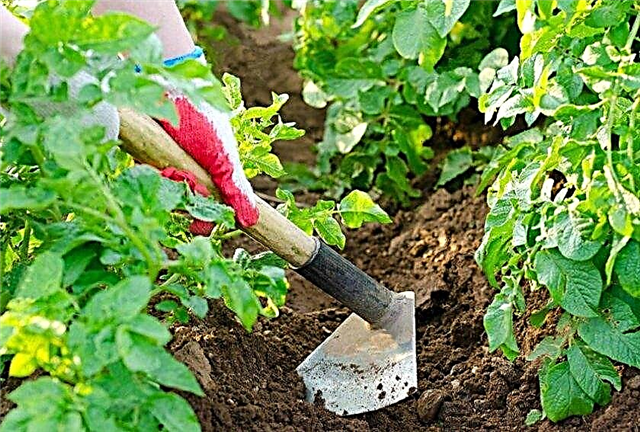
Pest and Disease Control
Subject to crop rotation and seed treatment with fungicides, the risk of various diseases is minimal.
In the event of a disease or attack by pests, the following methods are used:
- From fungal diseases (powdery mildew, late blight, fusarium, spotting and others), it is effective to spray with the Gamair preparation 1 tablet / 5 l of water for irrigation, 2 tablets / 1 l of water for spraying. The biological agent has a wide spectrum of action and can be used at all stages of plant development.
- Spraying with Apache 0.5 g / 1 liter of water destroys the Colorado potato beetle and its offspring, as well as wireworms and flying pests.
- If it is impossible to use a chemical preparation against insects, they use the folk method: infusion of onion husks. Marigold or marigolds are planted in the aisles; these flowers scare away most pests, including the Colorado potato beetle.
Did you know? The Guinness Book of Records with an unusual achievement hit the Canadian champion in eating fried potatoes. Pat Bertoletti managed to eat 6 kg of product in 10 minutes.
Harvesting and storage
Most farmers before mowing potatoes mow the ground part 10 days before the process. This gives the tubers the opportunity to tighten the peel, which will contribute to longer storage.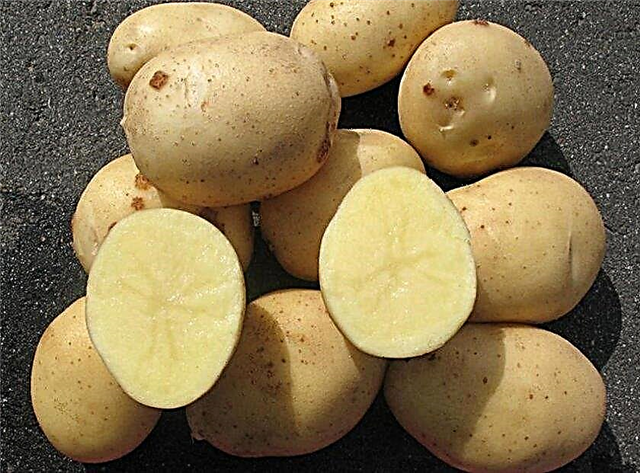 Elmundo is collected in two approaches:
Elmundo is collected in two approaches:
- they dig for the first time 45 days after germination;
- they dig out a second time after 55 days.
The second dig is harvested. The room must be ventilated, dry. Storage temperature is not higher than + 3 ° С, in such conditions the variety is stored for about 6 months.
Experienced farmers highly appreciate the technical characteristics of the variety: in the conditions of the Black Earth region, up to 500 kg / ha of selected tubers were harvested. In addition, the variety is practically not susceptible to insect attacks and diseases, and its taste attracts most consumers.

